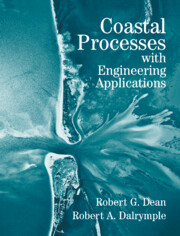Book contents
4 - Tides and Storm Surges
Published online by Cambridge University Press: 29 May 2010
Summary
Most waves are formed by relatively steady winds blowing over the water surface, but, in some cases, waves can be formed by unusual meteorological events. As an example, squall line surges are caused by the movement of a relatively small atmospheric pressure perturbation at the approximate speed of the waves being generated. This results in energy being transferred to the same waves continuously, causing them to build up at a relatively rapid rate in a type of resonance. Examples include an event in 1954 that caused seven fatalities along the Lake Michigan shoreline (Ewing, Press, and Donn 1954) and one in 1929 that also caused fatalities (Proudman 1929, 1952). Some surprising characteristics of these types of waves are the small number of substantial waves produced (one to three), the height of the waves (1 to 3 m), and the small magnitude of the pressure change required to cause this phenomena (1 to 3 mbar).
On the evening of July 3, 1992, at Daytona Beach, Florida, a freak wave about 2 m high surged up the beach on an otherwise calm night. Driving on the beach is allowed in this area, and several cars were carried up the beach by the wave and jammed under the boardwalk. A park ranger driving down the beach was overtaken by the wave, which floated his jeep up the beach on the uprush and then back down; the vehicle was then set down near where it had been picked up. The ranger continued on his drive.
- Type
- Chapter
- Information
- Coastal Processes with Engineering Applications , pp. 73 - 87Publisher: Cambridge University PressPrint publication year: 2001



